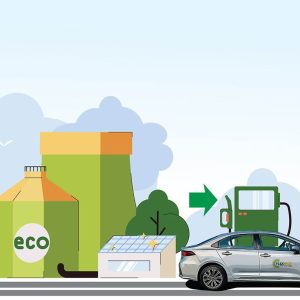
Analysis: Why India is pursuing ethanol as an automotive fuel
Going forward, increasing fuel consumption along with an increasing blend percentage will indicate more ethanol will be needed, however this is something all stakeholders say is simple to achieve.Sugarcane might deliver a sweet deal in decreasing automotive emissions.Going by gas intake quotes and factoring in a mix of 20 percent ethanol, India will need 1,016 crore litres of ethanol in 2025, which is considerably lower than Indias predicted supply of 1,500 crore litres of this biofuel. Therefore, these 2G ethanol plants will increase ethanol production, and significantly, will do so from farming waste.The extra benefits here are obvious, 2G ethanol is a great example of waste-to-wealth development for the farming neighborhood. With a 20 percent ethanol blend not only will the country be minimizing its unrefined imports, it will likewise imply a cleaner fuel is being burned, as ethanol, being plant based, has the lowest carbon emissions on a well-to-wheel basis.Shift to ethanol: support from the industryTo run E20 fuel, however, requires adjustments to the engine– mainly material modifications to bits like hoses and fuel lines as they need to handle the additional corrosive nature of ethanol. While India will target a 20 percent ethanol mix, the Corolla is a flex-fuel car significance that it can run any blend percent, even pure ethanol just. Speaking at the unveiling of the flex-fuel Corolla, he said, “With flex engines running only on ethanol, we will just need 4,000 crore litres”– production of which, many state, India can possibly achieve in this decade.Shift to ethanol: dealing with challengesThe ethanol path is not all rosy though, while brand-new vehicles will be E20 compliant, older vehicles will have issues with the greater destructive nature of the fuel.
Going forward, increasing fuel usage along with an increasing blend percentage will imply more ethanol will be required, but this is something all stakeholders state is easy to achieve.Sugarcane could deliver a sweet deal in lowering automotive emissions.Going by petrol usage quotes and factoring in a mix of 20 percent ethanol, India will need 1,016 crore litres of ethanol in 2025, which is considerably lower than Indias projected supply of 1,500 crore litres of this biofuel. Thus, these 2G ethanol plants will increase ethanol production, and importantly, will do so from agricultural waste.The extra advantages here are obvious, 2G ethanol is an excellent example of waste-to-wealth development for the farming neighborhood. With a 20 percent ethanol blend not only will the country be lowering its unrefined imports, it will also suggest a cleaner fuel is being burned, as ethanol, being plant based, has the least expensive carbon emissions on a well-to-wheel basis.Shift to ethanol: assistance from the industryTo run E20 fuel, however, needs modifications to the engine– primarily material modifications to bits like pipes and fuel lines as they require to manage the additional corrosive nature of ethanol.
Leave a reply